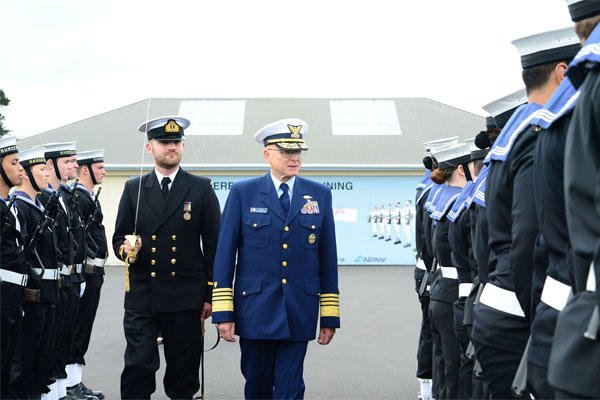Commandant of the Coast Guard Adm. Bob Papp finished his recent international trip last week with an official visit to New Zealand. Like the other three countries on his itinerary, this visit was aimed at strengthening ties with partner maritime governance organizations and learning more about the dynamic Asia-Pacific Region.
It may be surprising to many that the U.S. Coast Guard has interests on the other side of the world in New Zealand, but the global nature of maritime threats requires a combined international effort to successfully counter them. Working with partners to address threats as far away from our shores as possible, rather than contend with them once they arrive, is a key tenet of the Department of Homeland Security’s layered security strategy. In addition, New Zealand is a lot “closer” to U.S. waters than you may think.
At 4.7 million square miles, the U.S. Exclusive Economic Zone is the largest in the world. An EEZ is generally the area of water extending 200 miles seaward from a country’s coastline in which that country has special rights over the exploitation of marine resources. Nearly half of the total U.S. EEZ lies in the Western Pacific, encircling Hawaii, Guam, American Samoa and five other islands. In fact, the U.S. EEZ adjoins those of other neighboring nations, including Japan, Kiribati, Tonga and the South Pacific island of Tokelau – a New Zealand territory.
New Zealand and the United States, along with Australia and France created the Quadrilateral Defence Coordination (Quad) Talks to provide guidance, operational planning and coordination to address regional threats, especially illegal, unregulated and unreported fishing in an EEZ. This effort has included support to the Pacific Islands Forum Fisheries Agency multilateral operations against IUU fishing, such as Operation Kurukuru in 2012.
“The Royal New Zealand Navy is a leader for coordinating maritime security among smaller southern Pacific Island nations,” said the Commandant. “They have a sustained commitment to partners in the region.”
Part of New Zealand’s linkage to the South Pacific is its rich native Maori culture, which traces to Polynesian people who travelled vast distances by sea from other islands to New Zealand. The Maori language, history and heritage are fully integrated into society, government and the military.
The Commandant experienced this upon arrival at the Devonport Naval Base in Auckland, where the Royal New Zealand Navy conducted a traditional Wero Powhiri welcome ceremony, hosted by Chief of Navy Rear Adm. Jack Steer. The ceremony involved a fierce challenge and then a welcome by a Maori warrior, speeches and songs, in Maori and English, and the traditional greeting of a handshake and touching nose-to-nose.
During the traditional ceremony, the Commandant spoke to the importance of celebrating heritage and history and led the Coast Guard delegation in singing Semper Paratus. This moving ceremony reinforced the importance for the Coast Guard to celebrate our own history and heritage and the urgency to build the National Coast Guard Museum in New London, Conn., starting next year.
The Commandant’s visit included a tour of HMNZS Otago, one of two ice strengthened RNZN offshore patrol vessels, which recently returned from a fisheries patrol in the harsh Southern Ocean.
“I had a valuable discussion with the commanding officer and crew about the conditions they face in the Southern Ocean,” said the Commandant. “Heavy seas and wind, numbing cold, dangerous shifting ice, and multi-day transits to the nearest logistical support. They are learning how to become proficient and manage risk in an environment much like we face in the U.S. Arctic, especially in summer months. Listening to their experiences will help inform our future Arctic Shield operations.”
The Commandant also met with other New Zealand senior defense leadership and U.S. Ambassador David Huebner.


























